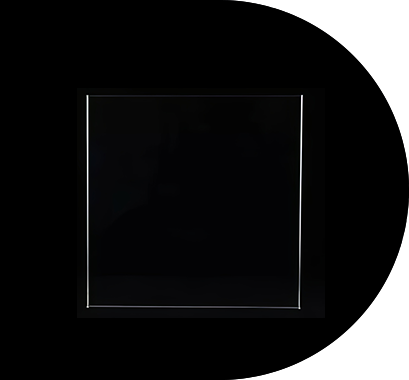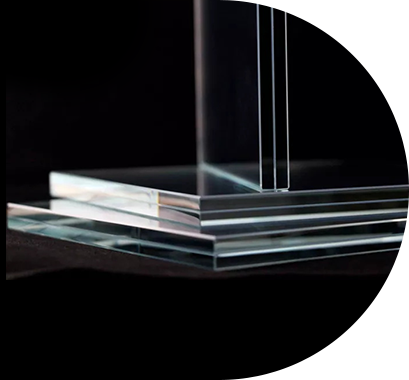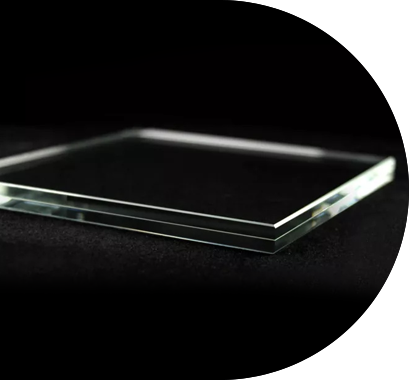In the world of visual presentation—whether it's a cherished photograph, a valuable artwork, or a professional certificate—clarity is everything. However, conventional glass often compromises the viewing experience with harsh reflections and glare, especially under indoor lighting or natural sunlight. This challenge has led to the growing adoption of low reflection photo frame glass, a high-performance solution that enhances visibility and preserves the visual integrity of displayed items.
As interior environments increasingly demand both aesthetic excellence and functional performance, low reflection glass has become a critical material for galleries, museums, home décor, retail displays, and office interiors.
What Is Low Reflection Photo Frame Glass?
Low reflection photo frame glass, also referred to as anti-reflective glass or non-glare glass, is a specially processed flat glass designed to reduce the light reflection on its surface. Unlike standard float glass, which typically reflects around 8% of ambient light per surface, low reflection glass can reduce that reflectivity to less than 1%, allowing viewers to see through the glass with minimal visual distortion.
This type of glass is manufactured using advanced technologies such as:
-
Magnetron Sputtering Coating: A vacuum-based coating process where metal oxide layers are deposited on the glass surface to cancel out reflected wavelengths of light.
-
Etching or Acid-Washing Techniques: Used to create a fine matte finish that diffuses reflected light, common in non-glare variants.
-
Multilayer Optical Coatings: Engineered to target specific light wavelengths, offering both anti-reflective and UV-blocking properties.
The result is a glass surface that appears almost invisible when installed over framed materials, providing enhanced clarity and reducing distracting glare from lights, windows, or overhead fixtures.
Benefits of Low Reflection Glass in Framing Applications
The adoption of low reflection glass offers a range of benefits, especially in settings where viewing accuracy and aesthetics are prioritized:
-
Improved Visual Clarity: Details, colors, and textures remain vivid and unobstructed, allowing for a true-to-life viewing experience.
-
UV Protection: Many low reflection glass products include integrated UV-blocking coatings that help preserve photographs, documents, and artwork by minimizing fading over time.
-
Elegant Appearance: The near-invisible quality of the glass creates a modern, high-end presentation that complements both minimalist and traditional interior designs.
-
Reduced Eye Strain: Viewers can enjoy images for longer periods without being affected by bright spots or mirror-like reflections.
For art galleries and professional photographers, the clarity and non-intrusive qualities of low reflection glass ensure that the subject remains the focus—not the glare. In homes and offices, it elevates interior decor while protecting sentimental or valuable items.
Application Scenarios: From Homes to Museums
Low reflection photo frame glass finds widespread use across a variety of environments:
-
Residential Interiors: For family portraits, wedding photos, travel memories, and custom artwork, low reflection glass offers homeowners a cleaner, more refined look.
-
Art Galleries and Exhibitions: Museums use this glass to protect and display paintings and historical documents while allowing for glare-free appreciation by visitors.
-
Corporate Offices: Certificates, awards, and branded materials benefit from enhanced visibility under harsh office lighting.
-
Retail Spaces: In visual merchandising, clear displays of promotional posters or product features can help improve customer engagement.
-
Photography Studios and Framing Shops: Professionals use low reflection glass as a premium framing option for clients who demand the best in display quality.
Sustainability and Durability
Modern low reflection glass products are not only designed for performance but also consider environmental impact. Many manufacturers now offer eco-friendly options with:
-
Lead-Free Coatings: Reducing harmful substances in both the product and the production process.
-
Recyclable Glass Substrates: Supporting circular economy initiatives in the architectural and decorative glass industries.
-
Scratch Resistance: Enhanced durability during handling, transportation, and installation, especially important for commercial and high-traffic installations.
Innovations Driving the Market
As visual presentation continues to evolve with the digital age, innovations in glass manufacturing are pushing the boundaries of what low reflection glass can do. Some of the latest trends include:
-
Smart Anti-Reflective Glass: Integration with touch-screen displays or digital signage, especially for high-end commercial and luxury retail settings.
-
Anti-Fingerprint Coatings: Providing not only low reflection but also cleanliness for hands-on environments such as interactive exhibits.
-
Customization: Manufacturers now offer custom sizing, thickness variations, and edge finishes to meet bespoke framing requirements.
These advancements are positioning low reflection photo frame glass as a versatile and future-ready material not only for decorative applications but also for interactive and high-tech environments.
Meeting the Demand: Manufacturing Excellence
The production of low reflection glass requires a high degree of technical precision. Leading manufacturers utilize clean-room environments, automated coating systems, and strict optical inspection processes to ensure product uniformity. Glass is often cut, polished, and coated under tightly controlled conditions to meet industry standards for transparency, scratch resistance, and color neutrality.
Quality certification—such as ISO9001, CE, or RoHS compliance—further assures that the glass meets global safety and environmental standards. For distributors and framing professionals, sourcing from manufacturers with proven quality control systems ensures consistency across product lines and project deliveries.
The Future of Photo Framing
As consumer expectations evolve, so too does the framing industry. More homeowners and businesses are becoming aware of how the type of glass can dramatically affect the way images are perceived. With low reflection photo frame glass becoming more accessible and affordable, it is quickly emerging as the new standard for modern framing applications.

Whether it's preserving a priceless piece of art or simply showcasing a beloved family portrait, low reflection glass enhances both the protection and the presentation of visual content. As framing becomes more personalized and experience-focused, this specialized glass will play an increasingly central role in delivering clarity, elegance, and long-lasting visual appeal.






